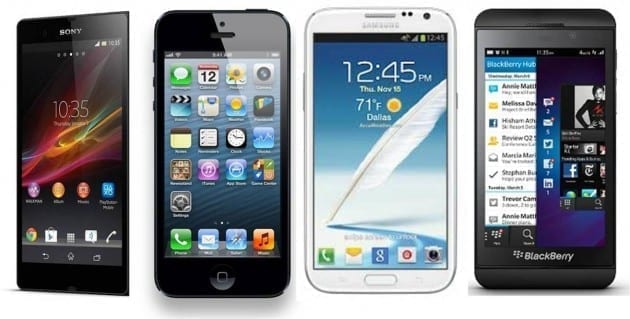Are we near the time when your mobile phone is literally an extension of oneself? It is close to being the only thing you need to leave the house with. As we become ever reliant on that smart little box, things are about to improve:
1. Smart Phones can open doors
This is true. When we leave the house most of us use our keys to make sure that no one can enter our home. Recently this process has been smartened up. Users can download a smart-phone app which can be used to lock their door remotely from their mobile phone. Advantageous in many ways: for those of us who like to double check, we wouldn’t need to keep hopping in and out of the car, or we could let in a guest from afar.
Locking and unlocking doors by remote is nothing new, but it is a new feature for mobile phones. Companies offer ‘locks’ that detect the vibrations of someone knocking on your door then send a text alert to your phone. Others even take a picture of who is at your door and send it to your phone. Now that’s impressive!
We already use a remote lock and unlock for our cars, key fobs to gain access in the workplace, swipe cards to open hotel rooms and so on. Could these processes be linked to our mobiles too?
2. Shopping without credit cards
If we can now ‘hover’ a credit card over a device to pay, it’s only a matter of time before we will just need to ‘hover’ a mobile phone. This is already starting to happen. Small businesses are being offered an app that, alongside a chip and pin keypad, a compatible smart-phone can take payment, issue receipts and manage refunds. More recently we have heard about ‘Cheque Imaging’ where bank customers can pay in cheques using a picture on their mobile phone. Great news for any of us leading a hectic life.
3. Paperless receipts
Quite rightly many people report that receipt storing is a fairly tiresome task, bits of paper that linger in your bag. There are already receipt tracking apps for capturing receipts, these are rudimentary by today’s technological standards: a customer takes a picture of their receipt and sends the image to have the data extracted, eliminating the need for saving bits of paper to claim back expenses by tracking receipts and mileage. The more powerful of these apps, as well as having AirPrint, allow you to scan, tag, and share via cloud storage, or email and have geo-tagging enabled.
Now for the general shopper (that will be me!) things are really hotting up. I should soon be able to ‘beam’ my receipts straight to an app on my phone. The app will store all my receipts in one place with a simple tap of my phone at the checkout (and this is supposed to help me keep track of my spending!). Shops can even offer digital rewards through their receipts – so everyone’s a winner.
In the future are we going to have to carry around our chargers everywhere we go, to avoid eliciting that state of panic we get when realising the battery light has flashed up red? Maybe not.
4. Phones could recharge by themselves – like solar panels
Could a wireless device convert ‘lost’ energy in the form of stray microwaves into energy? According to the researchers at Duke University, the answer is Yes.
This clever wireless device uses ‘captured’ microwave signals and converts it to a current voltage which could be enough to recharge a mobile phone battery. It is likened to the efficiency of a modern solar panel. This energy harvester, researchers have predicted, could be adjusted to harvest the signal from other energy sources such as Wi-Fi signals, satellite and sound signals. Fantastic news for the environmentally aware and economically minded alike.
Transforming their theoretical work on this ‘microwave harvesting meta-material’ into a reality for consumer applications, graduate students Katko and Hawkes say that the design can be used for ‘a lot of different frequencies and types of energy, including vibration and sound energy harvesting’. Imagine coating a meta-material to a room’s ceiling which could redirect and recover a Wi-Fi signal, which would otherwise remain unused!
As the researchers’ quite rightly point out, the implications for this power harvesting discovery are immense. It is an inexpensive way to allow a phone to re-charge wirelessly while not in use. Power lost by appliances in use could be recovered wirelessly.
So what next? Access to tube stations, hotels, a passport app? It seems the time is near when all we will need when we leave the house is that Smart Little Box.
